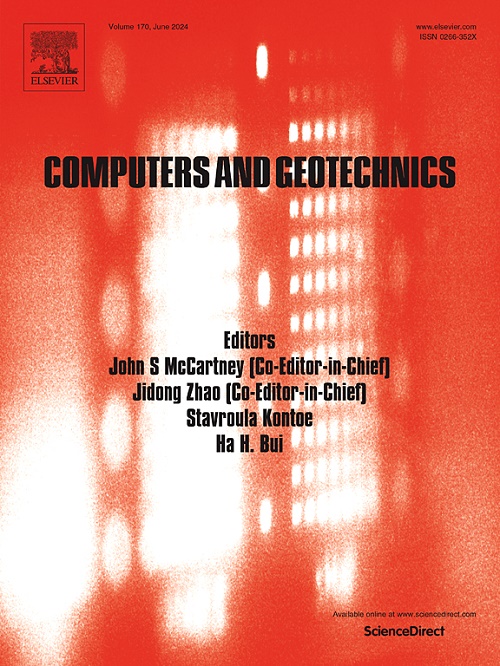Gravel Particle Shape Classification from Half-Particle Point Clouds using a Dynamic Graph Edge Convolution Neural Network
IF 5.3
1区 工程技术
Q1 COMPUTER SCIENCE, INTERDISCIPLINARY APPLICATIONS
引用次数: 0
Abstract
Obtaining the three-dimensional (3D) shape of gravel particles is essential for calculating their roundness and sphericity. However, cost-effective, and rapid non-penetrating 3D imaging technologies, such as 3D laser scanners, stereophotography, and structured light techniques, only capture the geometric shape of the upper half particles (2.5D particles), unable to penetrate a particle to acquire the shape of the lower half. Current algorithms cannot accurately classify real 3D particles using easily available and low-cost 2.5D particles. To address this issue, this study aims to develop a dynamic graph edge convolution neural network (DGECNN) based on deep learning, utilizing 2.5D point clouds to characterize and classify the roundness and sphericity of 3D particles. The dataset comprises 4200 2.5D point clouds labeled into 12 roundness-sphericity categories based on corresponding complete 3D particle characterizations. Experimental results demonstrate that with a sampling point of 1200 and a batch size of 64, the training time is relatively shorter, and the automatic classification accuracy reaches a peak of 90.76%. Finally, compared to the traditional 3D CG method, the DGECNN classification is equally applicable to sand-size particles and exhibits significant advantages in roundness-sphericity, volume, surface area, and convex hull volume.
求助全文
约1分钟内获得全文
求助全文
来源期刊

Computers and Geotechnics
地学-地球科学综合
CiteScore
9.10
自引率
15.10%
发文量
438
审稿时长
45 days
期刊介绍:
The use of computers is firmly established in geotechnical engineering and continues to grow rapidly in both engineering practice and academe. The development of advanced numerical techniques and constitutive modeling, in conjunction with rapid developments in computer hardware, enables problems to be tackled that were unthinkable even a few years ago. Computers and Geotechnics provides an up-to-date reference for engineers and researchers engaged in computer aided analysis and research in geotechnical engineering. The journal is intended for an expeditious dissemination of advanced computer applications across a broad range of geotechnical topics. Contributions on advances in numerical algorithms, computer implementation of new constitutive models and probabilistic methods are especially encouraged.
 求助内容:
求助内容: 应助结果提醒方式:
应助结果提醒方式:


